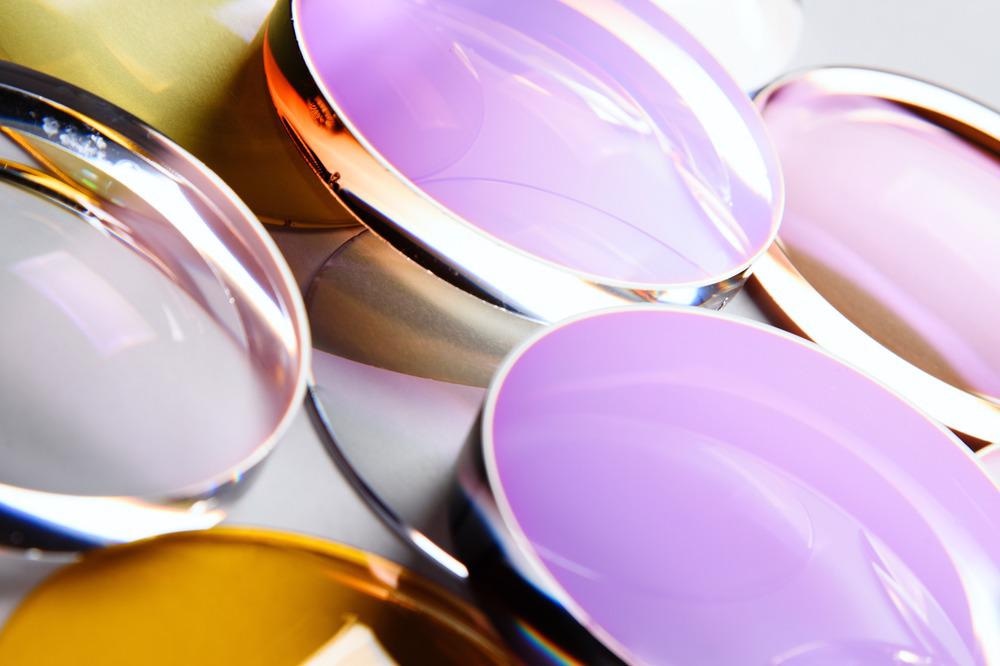Metalenses are flat lenses that use metasurfaces to focus light. The metasurfaces are a series of artificial antennae that manipulate the optical response of the incident light, including its amplitude phase and polarization.

Image Credit: Kryuchka Yaroslav/Shutterstock.com
Metalenses offer a new range of lightweight design options for lenses, but the flat nature of the surface helps avoid many of the distortions common in standard curved lenses.1
Advantages of Metalenses
Most traditional lens designs use a convex or concave shape to focus or expand the incident beam. While near-ideal focusing might be achieved on the optical axis, the resulting image may be distorted by light passing through other lens regions. Barrel and pincushion distortion at the corners of the image are some of the most common.
Correcting lens aberrations typically means the creation of custom lenses or multiple optical components, which adds weight and bulk to the device. If a device needs to change the focal position or a beam is translated, it is also necessary to move any lens stacks, which risks further instability.
Diffractive lenses have offered some advantages over conventional lens designs as they are also flat and are relatively easy to fabricate at a low cost. However, one of the significant drawbacks of these lenses is the presence of higher-order diffraction, limiting the image quality that can be achieved. In comparison, metalenses are much more flexible in their design and do not have the same issues with higher diffraction orders present in the transmitted image.
Many new types of surfaces are being created now for metalenses that will allow a flat lens to change its focusing position without physically changing the position of any of the components in the optical system.2 Many optical systems have instability problems due to moving parts; this limits their applications in areas such as handheld devices or onboard autonomous vehicles. Metalenses could be a very convenient compact solution for this.
Surface Structure
There are two main metasurface structures for metalenses, either dielectric or plasmonic. Dielectric materials are used in many standard optical components and can also create the sub-wavelength scatters that form the metasurface.
Dielectric materials are used to introduce phase delays into the incoming light pulse if required1 and there are now dielectric materials that can be used to create aberration-free, diffraction-limited, polarization-independent focusing that works over an extensive bandwidth range.3
When designing metalenses, it is essential to consider the geometry of the scattering points on the surface. Each of the meta-units can affect the properties of electromagnetic radiation and must be carefully designed to avoid conventional lens issues.
Plasmonic materials are beneficial for amplitude shaping of electromagnetic radiation and can be used across a wide range of wavelength regions.4 The plasmonic modes in the material are well-defined to create the lens, but various modifications, such as the addition of layers to filter out higher order plasmonic modes, could also help increase the efficiency of the final metalens.
There are already short-wavelength lithography setups that make use of the sub-diffraction limited focusing achievable with metalenses to improve the spatial resolutions of the instrument.4 However, there are still several challenges with fabricating metalenses to illuminate larger areas and enhance the efficiency of many metalens optics.
The Future of Metalenses
The potential of metalenses to perform complex wavefront engineering in a single optic is highly appealing for a range of applications.
Metalenses are ideal for device miniaturization, improving optical stability and achieving better quality focusing than conventional lenses.
However, the manufacture of metalenses is not trivial due to the need to engineer tiny structures with high precision to create the desired behavior on the metasurface.
Manufacturing metalenses cost-effectively is still a significant challenge. There is still a great deal of research needed into new materials suitable for use as metasurfaces.
Despite the challenge of fabrication, metalenses have made rapid progress in the last few years, with demonstrations that they can be used to control all of the fundamental properties of light. The sub-wavelength structures, in particular, have been lauded as having the potential to bring about a new revolution in ‘Engineering Optics 2.0’.5
Designing multiscale structures for broadband applications is another critical future challenge metalenses will need to overcome. Design and batch fabrication of metalenses is problematic as it requires merging several types of structures. However, new tools are emerging along with design principles which means a promising future ahead for any device that relies on integrated optics.
References and Further Reading
- Chen, M. K., Wu, Y., Feng, L., Fan, Q., Lu, M., Xu, T., & Tsai, D. P. (2021). Principles Functions and Applications of Optical Meta‐Lens. Advanced Optical Materials, 9, 2001414. https://onlinelibrary.wiley.com/doi/epdf/10.1002/adom.202001414
- Wang, Y., Chen, Q., Yang, W., Ji, Z., Jin, L., Ma, X., Boltasseva, A., Han, J., Shalaev, V. M., & Xiao, S. (2021). High-efficiency broadband achromatic metalens for near-IR biological imaging window. Nature Communications, 12, 5560. https://doi.org/10.1038/s41467-021-25797-9
- Shrestha, S., Overvig, A. C., & Lu, M. (2018). Broadband achromatic dielectric metalenses. Light: Science & Applications, 7, 85. https://doi.org/10.1038/s41377-018-0078-x
- Luo, X. (2018). Plasmonic metalens for nanofabrication. Nat Sci Rev, 5(2), 137–138. https://doi.org/10.1093/nsr/nwx135
- Luo, X. (2018). Engineering Optics 2.0: A Revolution in Optical Materials, Devices, and Systems. ACS Photonics, 5, 4724–4738. https://doi.org/10.1021/acsphotonics.8b01036
Disclaimer: The views expressed here are those of the author expressed in their private capacity and do not necessarily represent the views of AZoM.com Limited T/A AZoNetwork the owner and operator of this website. This disclaimer forms part of the Terms and conditions of use of this website.